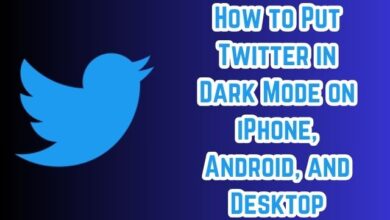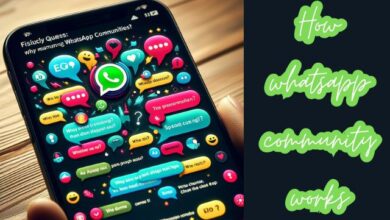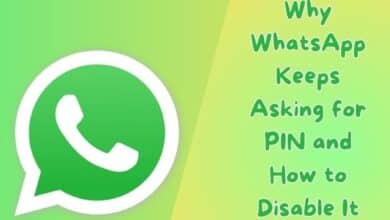How whatsapp channels work? Unlock the Secrets
WhatsApp Channels: A Comprehensive Guide to Understanding and Leveraging this Powerful Communication Tool

In the ever-evolving digital world, communication has been revolutionized by numerous platforms, one of which is WhatsApp. A key feature that makes WhatsApp stand out is its ‘channels’. But how exactly do these WhatsApp channels work?
WhatsApp channels, in essence, are a tool for mass communication, allowing users to send messages to a large number of people simultaneously. They are often used by businesses, organizations, and even individuals who wish to disseminate information quickly and efficiently.
The working of WhatsApp channels is quite straightforward. A user creates a channel and adds members to it. Once the channel is set up, any message sent in the channel is received by all its members. This feature is particularly useful for sending updates, announcements, or any form of collective communication.
However, the functionality of WhatsApp channels extends beyond just sending messages. They also offer features like end-to-end encryption, ensuring the privacy and security of the messages. Furthermore, they provide options for customization, such as setting up a unique channel name and icon.
We will delve deeper into the workings of WhatsApp channels, their features, and their pros and cons. So, stay tuned as we unravel the intricacies of how WhatsApp channels work.
This introduction aims to give you a brief overview of what to expect in this comprehensive guide about WhatsApp channels. Let’s dive in!
Understanding WhatsApp Channels
WhatsApp channels, introduced in June 2023, offer users a private platform to receive updates from influential figures, celebrities, brands, companies, news publications, and more. Essentially, these channels serve as an expanded version of the one-way broadcasting tool available to admins.
As of September 2023, the feature has been gradually rolling out globally and is now accessible in over 180 countries. Upon availability in your country, you’ll notice a new Updates tab on WhatsApp, housing the Status and Channels you choose to follow. These channels remain distinct from your regular chats with family, friends, and communities.
Joining a WhatsApp Channel is a straightforward process. Navigate to the updates tab, scroll through the find channel section, or tap “See All” to filter channels. Alternatively, you can use the search bar to find a specific channel. Joining is also possible through an invite link shared by the admin via email, WhatsApp Status, personal chat, group, or any web platform. Additionally, forwarded messages from the channel will contain a link allowing users to join directly.
Initially, the creation of WhatsApp Channels was restricted to a select few invited by influential entities already verified on Meta platforms, including celebrities, brands, or companies. However, as the update gradually rolls out, the option to create a WhatsApp channel will become available to all users. Once you receive the update to create a channel, follow these steps:
- Ensure you have the latest WhatsApp app installed on your phone (Android, iOS) and launch it.
- Switch to the Updates tab.
- Tap the + icon and select “Create Channel.”
- Proceed by tapping “Continue.” Enter the channel name, description, and icon to give it a distinct identity.
WhatsApp Channels: Unlocking Versatile Communication
WhatsApp channels stand out as a robust communication tool, offering a myriad of features that cater to the diverse needs of both individuals and organizations.
A pivotal feature of WhatsApp channels is their one-way broadcast capability, empowering admins to effortlessly disseminate text, photos, videos, stickers, and polls to all members of the channel. This streamlined broadcast approach ensures effective communication within the channel.
To facilitate the discovery and follow-up process, WhatsApp introduces a user-friendly searchable directory. This directory enables users to locate channels based on their specific interests, ranging from hobbies and sports teams to updates from local officials. Additionally, users can join channels seamlessly using invite links shared through various mediums like chats, emails, or online posts.
Recognizing the paramount importance of privacy, WhatsApp channels take a proactive stance by concealing the phone number and profile photo of the channel admin from followers. Likewise, following a channel does not divulge the user’s phone number to the admin or other followers, ensuring the preservation of personal information.
WhatsApp channels also boast a distinctive feature concerning the temporary storage of channel history. The platform retains channel history on its servers for a maximum of 30 days, with options to expedite the disappearance of updates from followers’ devices. Admins further wield the power to block screenshots and forwards within their channels, enhancing content control.
Admins exercise authority over their channels, determining who can follow them and whether they want their channel to be discoverable in the directory. While default channel encryption is not end-to-end, WhatsApp is actively exploring the implementation of end-to-end encryption for select audiences, such as non-profits or health organizations.
WhatsApp channels emerge as a dynamic and secure communication avenue, offering a seamless blend of broadcast capabilities, privacy safeguards, and administrative controls. As the platform continues to evolve, the prospect of end-to-end encryption for specific channels highlights WhatsApp’s commitment to adapting to the diverse communication needs of its users.
The Dark Side of WhatsApp Channels
WhatsApp channels, recognized for their prowess in mass communication, bring with them a set of drawbacks and potential issues. A primary concern revolves around the evident lack of personalization. Unlike targeted marketing campaigns, these channels broadcast uniform messages to all followers, irrespective of their unique preferences or interests. This uniformity can result in diminished engagement and lower click-through rates when compared to traditional WhatsApp broadcasts.
Another significant issue lies in the limited interaction capabilities of these channels. Recipients of broadcast messages find themselves unable to respond or engage with the content, transforming the communication into a one-way street. This restricts the potential for meaningful engagement and discussion among followers.
Visibility problems further plague WhatsApp channels, as updates risk going unnoticed if they don’t fall within a user’s last 10 received messages. This oversight can lead to followers missing crucial updates, undermining the effectiveness of the channel as a communication tool.
Additionally, the absence of automation features stands out as a notable drawback. Unlike platforms that offer chatbots or campaign scheduling, WhatsApp channels necessitate manual management. This manual upkeep becomes especially cumbersome for administrators handling larger channels, consuming valuable time.
Concerns about misinformation and fake news pose a considerable threat as well. WhatsApp has previously served as a conduit for the dissemination of conspiracy theories and false information. With the introduction of channels, there is an increased risk of such misinformation spreading more extensively, raising questions about the platform’s role in controlling the spread of unreliable information.
Privacy concerns also cast a shadow over WhatsApp channels. While these channels conceal the phone number and profile photo of the admin from followers, the absence of end-to-end encryption raises potential data regulation issues for businesses.
Efficiency of WhatsApp channels in communication is accompanied by limitations in personalization, interaction, and overall performance. It is imperative for administrators to be cognizant of these issues and navigate them judiciously to uphold a positive channel presence.
Effective Use of WhatsApp Channels
WhatsApp channels serve as a potent communication tool, especially for businesses and influencers. To harness their potential, it’s imperative to adhere to best practices:
1. Understand Your Audience: Delve into your target audience’s preferences. Tailor your content to align with their interests and needs, ensuring your updates resonate effectively.
2. Segmentation: If feasible, segment your subscriber list. This enables you to dispatch more pertinent messages to specific groups, fostering increased engagement and personalized interactions.
3. Consistent Branding: Uphold a uniform brand image throughout your WhatsApp channel. Maintain a consistent tone of voice, style, and color scheme in your updates, reinforcing brand recognition.
4. Regular Updates: Keep your channel dynamic by posting regular updates. However, exercise caution to avoid overwhelming your followers with an excess of updates in a condensed timeframe.
5. Engage with Your Followers: Despite WhatsApp channels being primarily one-way communication, foster engagement by seeking feedback or opinions. This interaction fosters a sense of involvement and value among your followers.
6. Use Multimedia: Leverage the diverse media options available on WhatsApp channels, including text, photos, videos, stickers, and polls. Employing a variety of media formats enhances the appeal and engagement of your updates.
7. Respect Privacy: Prioritize the privacy of your followers. Obtain consent before sharing their contact information, and exercise discretion in the content you disseminate to maintain trust.
8. Think Offline Too: Integrate your WhatsApp campaign with the in-store experience, encouraging customers to visit a physical location. This cohesive approach strengthens the connection between online and offline brand interactions.
By diligently adhering to these best practices, you can optimize the potential of WhatsApp channels, ensuring their effective utilization for your communication needs.
FAQ:
How do I use WhatsApp channels?
WhatsApp Channels allow users to receive updates from influential people, celebrities, brands, or companies. To follow a channel, switch to the Updates tab, select Find channels, browse through channels, and tap on Plus (+) to follow.
Can we earn money from WhatsApp channel?
While WhatsApp doesn’t allow direct monetization, there are ways to earn money indirectly. These include promoting your own small business, performing referral marketing for larger corporations, or managing other aspects of your professional life.
What is the benefit of WhatsApp channel?
WhatsApp Channels provide a private way for users to receive updates that matter to them within WhatsApp. They serve as an effective means for disseminating information, updates, and multimedia content to a select audience while maintaining the confidentiality of user contact information.
Are WhatsApp channels good?
WhatsApp Channels are gaining momentum due to their privacy setup that safeguards the personal information of channel admins and followers alike. They serve as a good platform for celebs, artists, and creators to monetize their content.
What are the limitations of WhatsApp channel?
WhatsApp Channels are currently rolling out gradually across the globe. Also, channel history is stored on the server for only 30 days, making it ideal for timely updates and promotions.
What is the difference between WhatsApp channel and broadcast?
While both are tools for mass communication, they differ in interaction. In a WhatsApp Channel, only the admin can send messages, and followers can only react to updates. In contrast, a WhatsApp Broadcast allows recipients to reply privately to the sender.
How can I grow my WhatsApp channel?
Growing a WhatsApp Channel involves defining your niche and audience, setting up your WhatsApp Business Account, building your subscriber base, creating high-quality content, and monetizing your channel.
How does WhatsApp earn profit?
WhatsApp makes money through its Business API and WhatsApp Pay. The Business API is used by brands for customer interaction, while WhatsApp Pay allows users to send money directly to the bank accounts of other WhatsApp users.
Which channel is best for earning money?
The profitability of a channel depends on its niche. For instance, on YouTube, niches like ‘Making Money Online’ and ‘Digital Marketing’ have high CPM rates, indicating strong advertiser interest and easier monetization. However, the best channel for earning money would depend on your specific skills, interests, and audience.
Conclusion: Whatsapp channels work
WhatsApp channels have emerged as a powerful tool for mass communication, particularly for businesses and organizations. They offer a private and secure way to broadcast messages to a large audience, making them an effective platform for sharing updates, news, and other information.
However, like any tool, they come with their own set of challenges. The lack of personalization and interaction, visibility issues, and potential for the spread of misinformation are some of the drawbacks that need to be navigated carefully.
Despite these challenges, the potential of WhatsApp channels cannot be denied. They have already become a popular way for businesses to reach their customers and employees. With the right strategies and mindful usage, they can serve as a valuable asset for communication and engagement.
WhatsApp channels represent a significant advancement in the realm of digital communication. As they continue to evolve and improve, they hold the promise of transforming the way we connect and communicate in the digital world.






